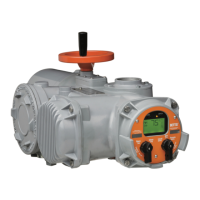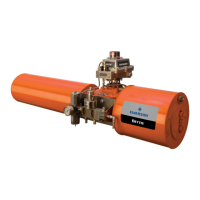5
Installation and Operation Manual
Part Number: VA001-507-32, Rev. 1
August 2016
Section 2: Installation
Installation
2.2 Valve Preparation
2.2.1 Remove Valve Gearing if so equipped.
2.2.2 If valve is equipped with stops, remove valve stem extension housing. Examine
the valve stops to ensure no foreign material is present that would restrict
normal travel of the valve. Some valves are equipped with inspection ports in
the valve housing for ease in examining the stops.
2.2.3 Check alignment of stem key slot to the position of the valve. Normally
with the valve in the open position, the key slot is in line with the run of the
pipeline.
With the valve in the closed position, the key slot should be 90° to the run of
the valve.
2.2.4 The EHO Actuator may be mounted to the valve at any time regardless of
whether or not the valve is under pressure.
2.3 Actuator Preparation
2.3.1 Once the EHO Actuator is uncrated and cleaned for installation, check to ensure
there will be no interference with piping or other structure when the actuator is
properly mounted to the valve.
NOTE:
At this point, check to see that when the actuator is mounted to the valve and in its final
orientation, the outboard end of the power cylinder positioned below the Hydraulic
Reservoir Breather. If this is not possible, contact Bettis for further instructions on piping
to elevate the breather. See Vertical Mounted Actuator 2.4.4.
2.3.2 Check that all mounting materials such as fasteners, adapters, brackets etc. are
on hand and ready for use.
2.3.3 Check the actuator and valve to see that they are in the same relative position,
that is either open or closed. If the actuator has to be moved, use the hand
pump provided. For hand pump operation, remove the plug in the reservoir and
install the breather (refer to 4.4 Hand Pump Operation).
2.3.4 All spring-return EHO Actuators are supplied with a small accumulator for
protection from thermal-expansion of the hydraulic fluid. This accumulator is
pre charged at the factory and will not need service during installation or start-
up of the actuator.
CAUTION:
Be aware, while preparing to and lifting the actuator, the Thermal Compensating
Accumulator contains high-pressure nitrogen. Use care not to damage the accumulator
or its attachments.

